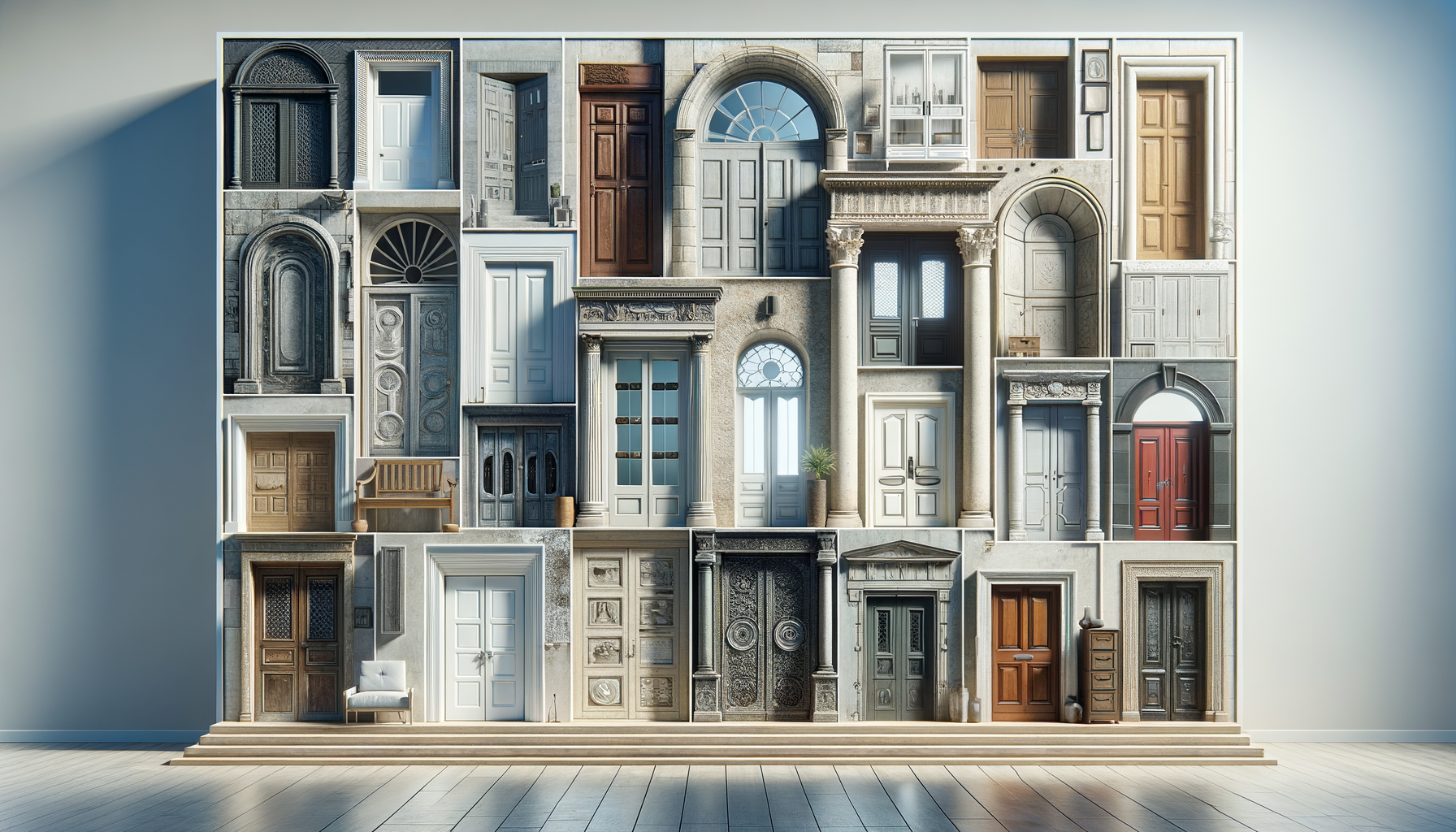The Historical Evolution of Doors
Doors have been an integral part of human habitation for centuries, evolving from simple barriers to complex design elements. In ancient times, doors were primarily functional, constructed from available materials like wood and stone. As civilizations advanced, so did their door-making techniques. The Egyptians, for instance, used doors with intricate carvings, often depicting religious or cultural motifs. In medieval Europe, doors became symbols of status, with castles boasting massive, fortified gates.
Over time, the functionality of doors expanded beyond mere security. The Renaissance period saw the introduction of ornate designs, with doors becoming canvases for artistic expression. This era marked a shift from purely utilitarian objects to aesthetic masterpieces. In the modern era, the industrial revolution brought about mass production, making doors more accessible and varied in design. Today, doors are a fusion of art and technology, incorporating materials like glass, metal, and composite substances, reflecting both historical influences and contemporary innovations.
The Functional Aspects of Doors
While doors are often appreciated for their aesthetic appeal, their primary function remains crucial. Doors serve as barriers that provide security, privacy, and protection from external elements. They are designed to withstand environmental factors like wind, rain, and temperature fluctuations. In residential settings, doors also play a role in noise reduction, helping to create a peaceful indoor environment.
Beyond these basic functions, modern doors often incorporate advanced technology. Smart doors, for example, offer features like remote access, biometric locks, and integration with home automation systems. These innovations enhance security and convenience, making doors an essential component of smart homes. Additionally, fire-rated doors are critical in commercial and industrial settings, providing crucial safety measures by preventing the spread of fire and smoke.
- Security: Protecting inhabitants and possessions.
- Privacy: Ensuring personal space is maintained.
- Insulation: Regulating temperature and noise.
- Safety: Fire-rated doors for emergency situations.
Material Choices and Their Impact
The choice of materials in door construction significantly impacts both functionality and aesthetics. Traditional wooden doors are cherished for their timeless appeal and versatility. They can be carved, painted, or stained to match any decor style. However, wood requires regular maintenance to prevent warping and decay.
Metal doors, often made from steel or aluminum, offer enhanced security and durability. They are resistant to environmental damage and require minimal upkeep. Glass doors, on the other hand, are popular for their ability to create an open, airy feel while allowing natural light to flow through spaces. However, they require considerations for privacy and safety, often incorporating frosted or tempered glass.
Composite materials are increasingly popular, combining the benefits of traditional materials with modern technology. These doors are designed to mimic the appearance of wood or metal while offering improved insulation and resistance to wear and tear. The choice of material ultimately depends on the specific needs and preferences of the user, balancing aesthetic desires with practical requirements.
Design Trends in Modern Doors
As with many aspects of interior design, door trends evolve with changing tastes and technological advancements. Minimalism has become a dominant trend, with sleek, simple lines and neutral colors gaining popularity. Frameless glass doors, for example, offer a seamless transition between indoor and outdoor spaces, aligning with open-plan living concepts.
Another trend is the use of bold colors and unique textures to make a statement. Brightly colored doors can serve as focal points in otherwise neutral spaces, adding personality and charm. Additionally, the integration of technology in door design is on the rise. Smart doors with touchless entry, automated locking systems, and energy-efficient features are becoming standard in modern homes.
- Minimalist designs: Sleek and functional.
- Bold colors: Adding character and vibrancy.
- Smart technology: Enhancing convenience and security.
These trends reflect a broader movement towards personalization and sustainability, with homeowners seeking doors that not only serve functional purposes but also enhance their living environments.
The Cultural Significance of Doors
Beyond their physical attributes, doors hold significant cultural and symbolic meanings across different societies. In many cultures, doors are seen as thresholds between the known and the unknown, the private and the public. They symbolize new beginnings, opportunities, and transitions.
In literature and art, doors are often used as metaphors for choice, opportunity, and mystery. They represent the idea of passage from one realm to another, both literally and figuratively. In certain traditions, the act of opening a door is a ritualistic gesture, signifying welcome and hospitality.
Furthermore, doors can reflect cultural values and social norms. In some societies, the front door is a status symbol, with elaborate designs and decorations indicating wealth and prestige. In others, the emphasis is on functionality and simplicity, reflecting a more utilitarian approach to life.
These cultural interpretations add layers of meaning to the seemingly simple act of opening or closing a door, highlighting their role as more than just architectural elements but as integral parts of human experience and expression.







